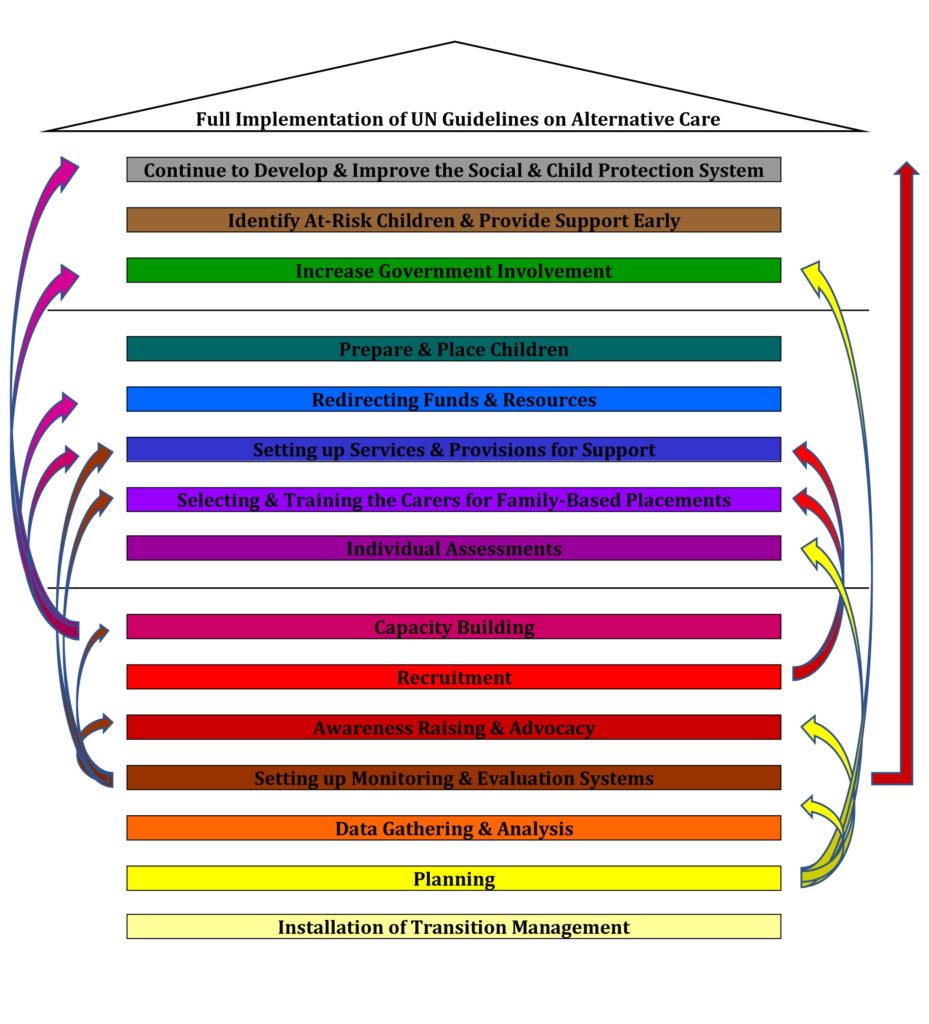Part 20 of the explanation with the ToC: Development work is never done. There is no such thing as a perfect child and social protection system Even if someone should manage to establish something that would be considered a perfect system according to today’s best practice, by next month new insights and information will emerge to show that certain things that were long considered to be beneficial turn out to be harmful to children. So, changes need to be made again.
A high quality social and child protection system needs to have guidelines and certain protocols in place, however, it can never be rigid. At the core of the UN Guidelines on Alternative Care for Children, as well as of the Convention on the Rights of the Child, lies the best interest of the individual child, which should take precedence over all other considerations. Both in the day to day decision making and the functioning over time, there has to be flexibility and a willingness to adapt to the given circumstances of the individual case, and to keep learning, developing and improving. Only through that can we hope to achieve full implementation of the UN Guidelines on the Alternative Care for the Child.
Assumptions
- Willingness to implement the UN Guidelines on Alternative Care for Children
- Commitment to preventing unnecessary family separation
- Commitment to keep child rights and child’s best interest at the centre of all decisions
- Willingness to invest resources into the transition stage
- Willingness to learn, and to seek knowledge and guidance when needed
- Willingness of communities, civil society and the government to work together
- Presence of a social workforce in some form, to build on
References
Georgette Mulheir & Kevin Browne (2007). De-Institutionalisation and Transforming Children’s Services. A guide to good practise. European Commission Daphne Programme, UK. <https://www.wearelumos.org/resources/de-institutionalising-and-transforming-childrens-services-guide-good-practice/> (06/02/2020).
Unknown (1989). United Nations Convention on the Rights of the Child. <http://www.un.org/en/universal-declaration-human-rights/>(07/06/2017).
Unknown (2009). Guidelines for the Alternative Care of Children. United Nations General Assembly. <https://www.google.co.uk/url?sa=t&rct=j&q=&esrc=s&source=web&cd=1&cad=rja&uact=8&ved=2ahUKEwjdnuK7m7_nAhUpUBUIHTDmBk8QFjAAegQIAxAB&url=https%3A%2F%2Fwww.unicef.org%2Fprotection%2Falternative_care_Guidelines-English.pdf&usg=AOvVaw0EQrKAH-B8dBx3MqFMbYhX> (07/02/2020).

If you would want to read the explanation with the model from the very start, you can go HERE.
Please share this blog to help spread awareness..

